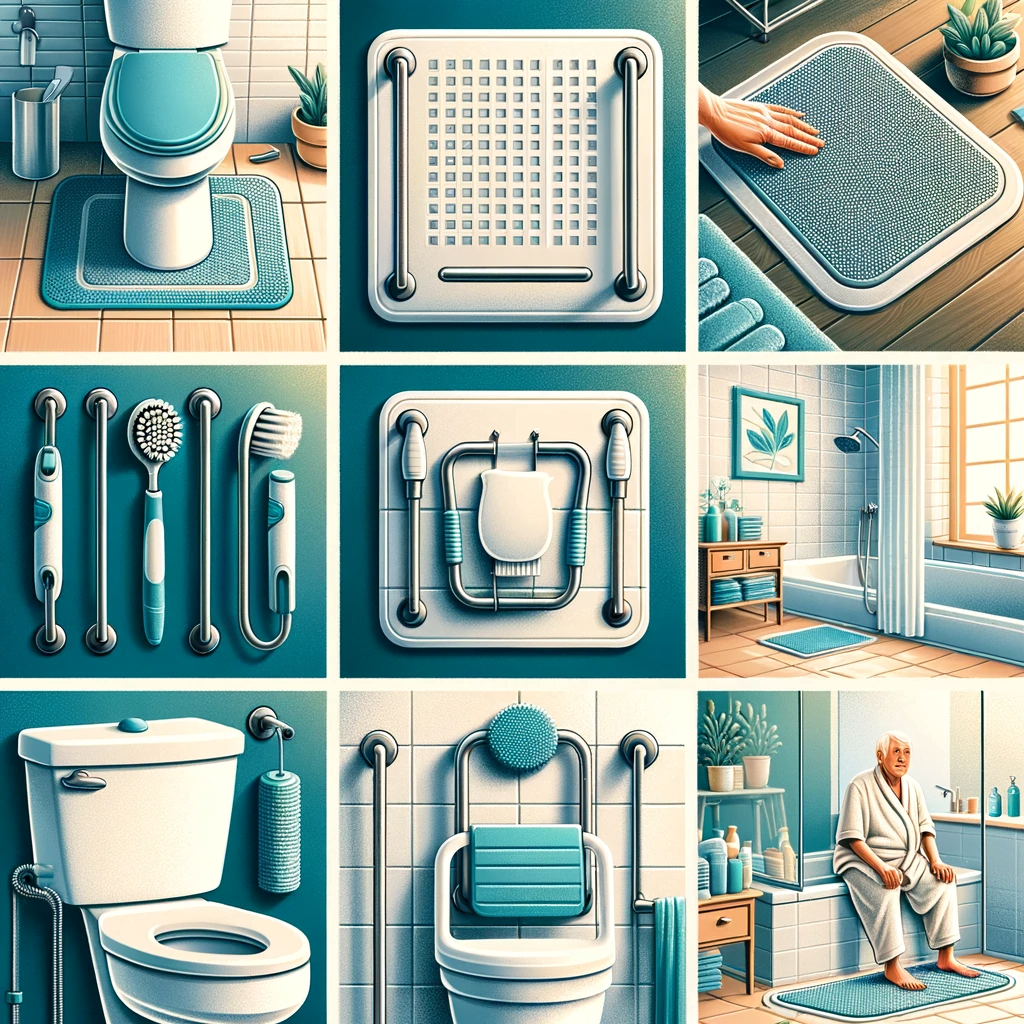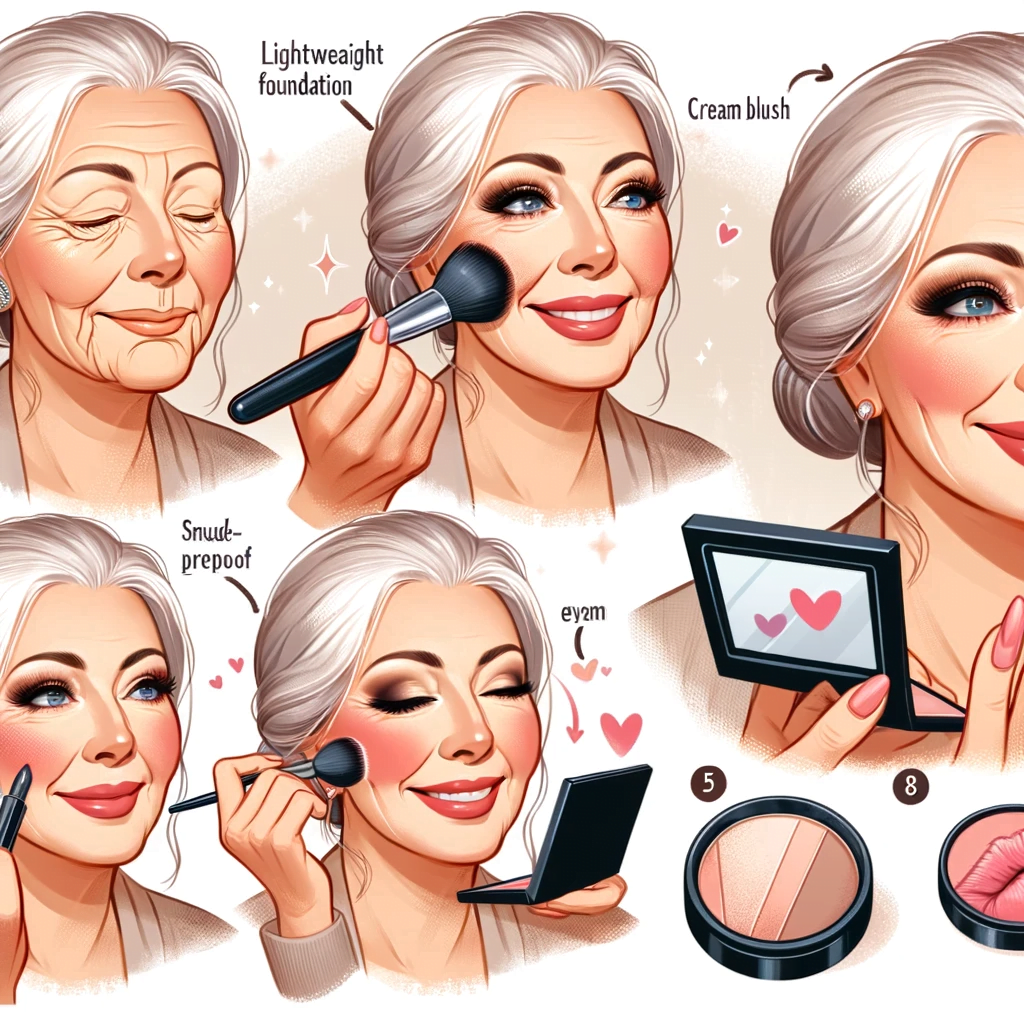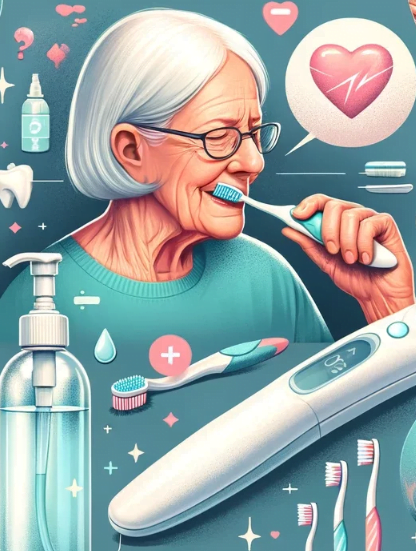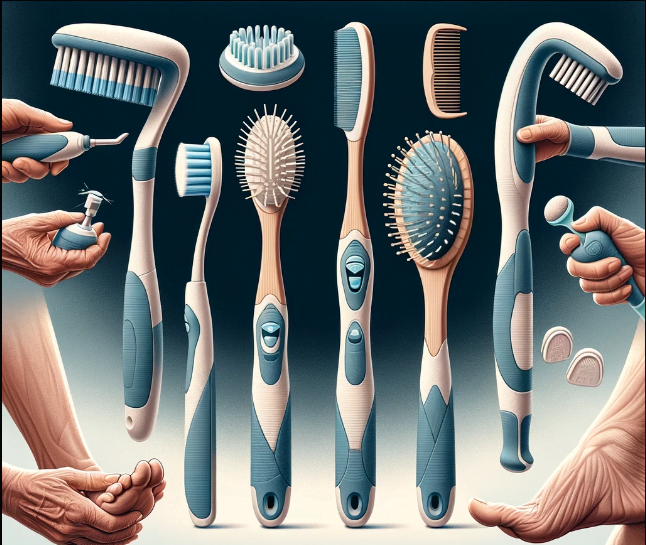Graceful Aging: Grooming & Beauty for Seniors
Introduction: Embracing Grooming & Beauty for Seniors
Grooming & beauty for seniors are timeless pursuits, transcending age and contributing significantly to our sense of well-being and confidence. As we step into our senior years, these practices take on a new dimension, adapting to our changing needs and lifestyles. In this comprehensive guide, we delve into the world of Senior Grooming and beauty, offering practical, safe, and comfortable solutions tailored specifically for seniors.
Our golden years present us with unique opportunities to redefine our grooming routines, embracing changes with grace and elegance. While our skin, hair, and nails may transform over time, our desire to look and feel our best remains constant. This guide is designed to provide you with insightful tips, recommended products, and safe practices that align with the specific needs of seniors.
Whether you are looking to simplify your skincare regimen, find ergonomic tools that ease the grooming process, or discover safe practices for bathroom routines, this guide has you covered. Our aim is to empower you to maintain your personal style and grooming habits in a way that is both enjoyable and practical, enhancing your quality of life and self-esteem.
Join us on this journey through the essentials of senior grooming and beauty, where we celebrate the beauty of aging and offer you the tools and knowledge to age gracefully and stylishly.
Understanding the Needs of Senior Grooming
As we age, our bodies undergo a multitude of changes, and these changes often call for adjustments in the way we approach grooming and beauty. The skin becomes more delicate, hair may thin or change texture, and nails might become more brittle. These physical changes necessitate a more gentle, mindful approach to personal care.
The Physical Changes in Seniors
Skin: As we age, our skin loses elasticity and moisture, making it more prone to dryness and irritation. This requires a shift to gentler, more hydrating skincare products. Sun protection becomes increasingly important to protect the skin from further damage.
Hair: Changes in hair texture and density are common in senior years. Hair may become finer, dryer, or start to thin. This calls for gentle hair care products and routines that minimize damage and maximize volume and health.
Nails: Aging can make nails more brittle and dry. Using ergonomic nail clippers and nourishing nail care products can help maintain nail health and appearance.
The Psychological Impact of Self-Care
Grooming and beauty routines are not just about maintaining a presentable appearance; they play a vital role in boosting self-esteem and mental well-being. Engaging in self-care activities can be a source of comfort and a way to preserve a sense of identity and pride.
- Routine and Normalcy: Maintaining a grooming routine can provide a sense of normalcy and control, especially important for seniors facing other age-related changes.
- Mental Health Benefits: Engaging in self-care activities can reduce feelings of stress and anxiety, promoting a more positive outlook on life.
- Social Interaction: Looking and feeling good can also encourage social interaction, which is vital for mental health and emotional well-being.
In the following sections, we’ll explore the various aspects of senior grooming and beauty, from choosing the right tools to adopting safe practices. Each section is designed to address the unique needs of seniors, ensuring that grooming remains a safe, enjoyable, and fulfilling part of your daily routine.

Essential Grooming Tools for Seniors
For seniors, the right grooming tools are not just about effectiveness but also about safety and ease of use. Here, we focus on ergonomic designs and features that make grooming a comfortable experience.
Ergonomic Nail Clippers
Why Ergonomic Nail Clippers Matter: Traditional nail clippers can be difficult to grip and use, especially for those with arthritis or reduced hand strength. Ergonomic nail clippers are designed with larger, non-slip handles and angled blades to provide better control and precision.
Choosing the Right Ergonomic Nail Clippers:
- Handle Design: Look for clippers with wide, rubberized, or cushioned handles.
- Blade Quality: Stainless steel blades are durable and maintain sharpness.
- Ease of Cleaning: Clippers should be easy to clean and maintain for hygiene purposes.
Hair Care Tools
Easy-to-Use Hair Brushes and Combs: Brushes and combs with wide, easy-grip handles are ideal. Soft bristles are gentle on the scalp and better for thinning hair.
Hair Dryers: Lightweight hair dryers with simple controls and cool settings are preferable to prevent overheating and make styling easier.
Electric Shavers & Trimmers
Safe Shaving Options: Electric shavers and trimmers designed for senior use often come with features like easy-grip handles, flexible heads, and gentle cutting mechanisms.
Points to Consider:
- Cordless Models: These offer more mobility and ease of use.
- Skin-Sensitive Features: Look for shavers designed for sensitive skin to reduce irritation.
By choosing the right grooming tools, seniors can maintain their personal care routine safely and independently. In the next sections, we will explore more aspects of senior grooming, including skincare, safe bathroom practices, and tips for maintaining personal style and grace.
Skincare in Senior Years
As we age, our skin care needs evolve. Senior skin is more prone to dryness, thinning, and sensitivity. Adapting your skincare routine to these changes is key to maintaining healthy, vibrant skin.
Understanding Skin Changes in Older Age
Increased Dryness: The skin produces less oil as we age, leading to dryness. Using hydrating cleansers and moisturizers becomes crucial.
Thinning Skin: Thinning skin is more susceptible to bruising and damage. Gentle handling and protective skincare products are essential.
Sensitivity: Aging skin can be more reactive to harsh ingredients. It’s important to choose products formulated for sensitive skin.
Recommended Skincare Products for Sensitive Senior Skin
- Gentle Cleansers: Look for hydrating, soap-free cleansers that don’t strip the skin of its natural oils.
- Rich Moisturizers: Creams and ointments with hyaluronic acid, glycerin, and ceramides can help lock in moisture.
- Sun Protection: Daily use of sunscreen with at least SPF 30 is vital to protect aging skin from sun damage.
Simple and Effective Skincare Routines
- Morning Routine: A gentle cleanse followed by a moisturizer and sunscreen can protect the skin throughout the day.
- Evening Routine: Removing any makeup, cleansing, and applying a richer night cream can help nourish the skin overnight.
Skincare in the senior years doesn’t have to be complex. It’s about choosing the right products and practicing gentle, regular care to keep the skin healthy and resilient. Next, we’ll explore safe bathroom practices, ensuring that your grooming routine is not only effective but also secure and comfortable.

Safe Bathroom Practices for Seniors
Safety in the bathroom is crucial for seniors, as this is a common place for slips and falls. By incorporating a few key elements and tools, the bathroom can be transformed into a secure and comfortable space for grooming and self-care.
Non-slip Bathroom Mats
Why They’re Important: Non-slip mats provide stability and reduce the risk of slipping on wet surfaces, a common hazard in bathrooms.
How to Select the Best Non-slip Bathroom Mats:
- Material: Look for rubber mats with suction cups that firmly adhere to the floor.
- Texture: Mats with a textured surface offer better grip.
- Size and Coverage: Ensure the mat covers a significant area around the bath or shower and in front of the sink.
Grab Bars and Shower Seats
Enhancing Bathroom Safety:
- Grab Bars: Installing grab bars near the toilet, shower, and bath provides support while moving around the bathroom.
- Shower Seats: A stable shower seat allows seniors to bathe comfortably and safely without the strain of standing for long periods.
Gentle Bathing Products and Tools
- Bathing Products: Choose mild, moisturizing soaps and body washes that are gentle on the skin.
- Long-Handled Sponges and Brushes: These tools make it easier to reach all areas of the body without straining.
Implementing these safe bathroom practices not only ensures comfort but also provides peace of mind, knowing that the risk of accidents is significantly reduced. In our next section, we will delve into makeup tips specifically tailored for the senior woman, focusing on techniques and products that enhance natural beauty in the senior years.

Makeup Tips for the Senior Woman
Makeup in the senior years can be a joyful expression of personal style and a celebration of one’s natural beauty. As skin and features change with age, so too should makeup techniques and products. Here, we provide guidance for creating a polished, age-appropriate look.
Adapting Makeup Techniques for Aging Skin
- Foundation: Opt for lightweight, hydrating foundations or tinted moisturizers that don’t settle into fine lines.
- Blush: Cream blushes blend easily and give a natural, healthy glow. Apply to the apples of the cheeks for a youthful effect.
- Eyes: Use softer shades of eyeshadow to enhance the eyes without overwhelming them. Eyeliner and mascara should be smudge-proof to prevent them from running.
Recommended Makeup Products
- Hypoallergenic Products: Ideal for sensitive senior skin, reducing the risk of irritation.
- Moisturizing Lipsticks: Choose lipsticks that provide hydration along with color. Avoid matte finishes, as they can make lips appear drier.
Step-by-Step Makeup Guide
- Prep the Skin: Start with a clean, moisturized face. Apply a primer if desired.
- Apply Foundation: Use a damp sponge or brush for a smooth, even coverage.
- Enhance the Eyes: Apply a light eyeshadow on the lids, and gently define the eyes with eyeliner and mascara.
- Add Cheek Color: Apply cream blush to the apples of your cheeks.
- Lips: Finish with a swipe of moisturizing lipstick or gloss.
Makeup for the senior woman is about enhancing features, not masking them. With the right products and techniques, makeup can be a tool for expressing individuality and feeling beautiful at any age. In the following section, we’ll explore hair care and styling, offering tips for managing changes in hair texture and style preferences.

Hair Care and Styling for Seniors
Maintaining healthy, stylish hair is an important aspect of grooming and self-expression for seniors. As hair changes with age, it’s essential to adapt hair care routines and styling techniques to suit these changes, ensuring hair remains vibrant and healthy.
Managing Thinning Hair and Hair Loss
- Gentle Hair Care: Use mild shampoos and conditioners to minimize damage. Avoid harsh treatments and heat styling tools.
- Volumizing Products: Look for products specifically designed to add volume and fullness to thinning hair.
- Scalp Care: A healthy scalp promotes hair growth. Use gentle massages and nourishing treatments to maintain scalp health.
Easy and Stylish Haircuts for Senior Men and Women
- Low Maintenance Cuts: Styles that are easy to maintain and style at home are ideal for seniors. Consider layered cuts for women and shorter, classic styles for men.
- Adapting to Hair Texture: Work with your hairdresser to choose styles that complement your hair’s current texture and density.
Gentle Hair Coloring Techniques and Products
- Ammonia-Free Dyes: These are less damaging and ideal for sensitive scalps.
- Highlighting and Lowlighting: These techniques can add dimension and depth to graying hair.
- Professional Advice: Consult with a stylist to choose colors and techniques that are flattering and easy to maintain.
Good hair care and styling can significantly impact a senior’s overall appearance and confidence. By choosing the right styles, products, and techniques, seniors can continue to enjoy healthy and stylish hair at any age. In the next section, we will delve into oral hygiene for seniors, discussing the challenges and solutions for maintaining healthy teeth and gums in the senior years.

Oral Hygiene for Seniors
Maintaining oral health is crucial at every stage of life, and the senior years are no exception. With age, dental care may pose new challenges, but it remains essential for overall health and well-being.
Challenges in Maintaining Oral Health in Older Age
- Reduced Saliva Production: This can lead to dry mouth, increasing the risk of tooth decay and gum disease.
- Manual Dexterity Issues: Conditions like arthritis can make it difficult to use traditional toothbrushes and floss.
- Wear and Tear: Years of dental work, such as fillings and crowns, may need maintenance or replacement.
Recommended Toothbrushes and Oral Care Products
- Electric Toothbrushes: These can be easier to hold and more effective at cleaning, especially for those with limited hand mobility.
- Water Flossers: A good alternative to traditional floss, water flossers are effective and easy to use.
- Fluoride Toothpaste and Mouthwash: These products help prevent cavities and strengthen tooth enamel.
Tips for Effective and Comfortable Dental Care
- Regular Dental Check-Ups: Regular visits to the dentist are key for early detection and treatment of dental issues.
- Hydration: Drinking plenty of water combats dry mouth, a common issue in seniors.
- Diet: A balanced diet, low in sugary foods and high in calcium, promotes oral health.
Oral hygiene for seniors is about adapting to changing needs to maintain dental health and function. With the right tools and practices, seniors can continue to enjoy a healthy, comfortable mouth and a bright smile. The next section will explore dressing and personal style in senior years, offering tips for comfortable yet stylish clothing and accessories.
Dressing and Personal Style in Senior Years
Fashion and personal style are timeless, and senior years offer a wonderful opportunity to express oneself through clothing and accessories. Comfort, functionality, and personal taste can blend seamlessly to create styles that are both practical and elegant.
Comfortable Yet Stylish Clothing Options
- Easy-to-Wear Fabrics: Soft, stretchable fabrics that are easy to put on and take off are ideal. Look for clothes that are breathable and accommodate any mobility issues.
- Adaptive Clothing: There are clothing lines specifically designed for seniors that combine ease of use with style, such as garments with Velcro closures or elastic waistbands.
Accessories and Footwear for Ease and Safety
- Functional Accessories: Choose accessories that are easy to handle, like magnetic jewelry clasps or large-buttoned watches.
- Supportive Footwear: Shoes should provide good support and have non-slip soles. Velcro straps or slip-on designs can be more convenient than laces.
Tips for Maintaining Personal Style with Ease
- Mix and Match: Build a wardrobe with versatile pieces that can be easily combined.
- Statement Pieces: Incorporate items like colorful scarves, hats, or brooches to add personality to your outfits.
- Professional Advice: Consider consulting with a stylist who specializes in senior fashion for personalized recommendations.
Dressing in senior years should be about comfort, safety, and expressing your unique style. Clothing and accessories can be functional and fashionable, enhancing your everyday life with both ease and elegance. In the upcoming sections, we’ll further explore ergonomics in grooming tools and provide tips for avoiding injuries, ensuring that your grooming and beauty routines are as safe as they are enjoyable.

Ergonomics and Ease-of-Use in Senior Grooming Tools
Ergonomics plays a critical role in senior grooming, ensuring tools are not only effective but also comfortable and safe to use. Ergonomically designed grooming tools can significantly enhance the grooming experience for seniors, especially for those with limited mobility or strength.
Importance of Ergonomics in Grooming Tools
- Reduced Strain: Ergonomic tools are designed to minimize strain on joints, muscles, and tendons, which is particularly beneficial for seniors with arthritis or hand weakness.
- Enhanced Control: These tools often feature non-slip grips and user-friendly designs that provide better control and precision.
Examples of Ergonomic Products Tailored for Seniors
- Ergonomic Toothbrushes: These come with larger handles and angled heads to make brushing easier and more effective.
- Hair Brushes and Combs: Look for options with wide, non-slip handles for easier grip and use.
- Foot Care Tools: Long-handled pumice stones and foot brushes aid in reaching feet comfortably.
Incorporating ergonomic tools into your grooming routine can make a significant difference in maintaining independence and comfort in self-care. Ergonomics is about finding solutions that fit your specific needs, enabling you to continue your grooming routine with ease and confidence.
In the next section, we will focus on safety, discussing common grooming-related injuries among seniors and how to avoid them. This will include tips for safe grooming practices and precautions to take during your routine.
Safety First: Avoiding Injuries While Grooming
Grooming should be a safe, comfortable experience, but for seniors, it can sometimes pose risks. Understanding these risks and adopting safe practices is key to avoiding injuries and ensuring a pleasant grooming routine.
Common Grooming-Related Injuries Among Seniors
- Slips and Falls: These can occur when reaching for grooming items or in wet areas like bathrooms.
- Cuts and Nicks: Using sharp grooming tools like razors or scissors can lead to cuts, especially if hand stability is a concern.
- Strains and Sprains: Overreaching or maintaining uncomfortable positions during grooming can cause muscle strains or sprains.
Safe Grooming Practices and Precautions
- Organize Grooming Items: Keep regularly used items within easy reach to avoid overstretching or bending.
- Use Appropriate Tools: Opt for safety razors, electric shavers, and nail clippers with safety guards to minimize the risk of cuts.
- Maintain a Stable Stance: Use a sturdy chair or stool in front of the bathroom mirror for grooming tasks that require precision.
- Non-Slip Mats: Place these in areas where you stand for grooming tasks, like in front of the sink.
- Adequate Lighting: Ensure your grooming area is well-lit to improve visibility and reduce the risk of accidents.
By taking these precautions, seniors can maintain their grooming independence while minimizing the risk of injuries. Remember, safety in grooming is not just about the tools you use, but also how and where you use them.
In our conclusion, we will summarize the key points of senior grooming and beauty, highlighting the importance of maintaining these practices for confidence, health, and well-being.
Conclusion: Grooming & Beauty for Seniors
Throughout this guide, we’ve explored the various facets of senior grooming and beauty, emphasizing the importance of adapting routines to meet the changing needs of our bodies and lifestyles. From ergonomic tools that ease the grooming process to skincare routines tailored for mature skin, each aspect of grooming in the senior years is a step towards embracing and celebrating the beauty of aging.
Key Points of Senior Grooming and Beauty
- Adaptability: Adjusting grooming routines to suit the physical changes of aging is essential for both safety and comfort.
- Ergonomics: Choosing ergonomic tools can greatly enhance ease of use and reduce the risk of injury.
- Simplicity and Efficacy: Effective grooming routines don’t have to be complex; simplicity often leads to consistency and enjoyment in daily self-care.
- Safety First: Incorporating safe practices in grooming routines is crucial to avoid accidents and injuries.
- Personal Style: Maintaining personal style and grooming habits is a powerful way to foster self-esteem and joy in the senior years.
We hope this guide inspires you to continue or perhaps even redefine your grooming and beauty routine, finding new ways to express yourself and enjoy the process. Remember, grooming and beauty are not just about appearance; they are acts of self-care that nurture both the body and the spirit.
Encouraging Confidence and Pride in Personal Appearance at Any Age
No matter your age, taking pride in your appearance is a testament to your self-respect and zest for life. As seniors, we have the opportunity to model grace, elegance, and confidence, showing that beauty truly is timeless.
We invite you to share your own tips and experiences in the comments below, creating a community of support and inspiration. And if you found this guide helpful, be sure to explore our other articles on senior lifestyle, health, and wellness.
Resources:
- The National Institute on Aging (NIA) has a website with a wealth of information on healthy aging, including a section on grooming and beauty. The NIA also offers a free brochure called “Beauty Tips for Older Adults”.
- The American Academy of Dermatology (AAD) has a website with information on skin care for seniors, including how to protect your skin from the sun, how to care for dry skin, and how to prevent skin cancer.
- The American Association of Retired Persons (AARP ) has a website with information on grooming and beauty for seniors, including tips on how to choose the right makeup, how to care for your hair, and how to find a good hairdresser. Association of Retired Persons (AARP) website
- Justforseniors.org – Personal Care

